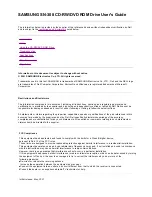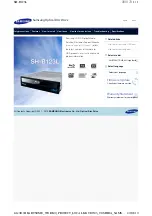
FC 300 CANopen
MG.33.J1.02 VER. 050301 – VLT is a registered Danfoss trademark
33
The PDOs correspond to entries in the device Object Dictionary and provide the interface to the
application objects. Data type and mapping of application objects into a PDO is determined by a
corresponding default PDO mapping structure within the Device Object Dictionary. If variable PDO-
mapping is supported the number of PDOs and the mapping of application objects into a PDO may be
transmitted to a device during the device configuration process by applying the corresponding SDO
services.
Number and length of PDOs of a device is application specific and have to be specified within the
device profile.
PDO Transmission Modes
The following PDO transmission modes are distinguished:
•
Synchronous Transmission
•
Asynchronous Transmission
The classification of synchronous and asynchronous PDOs is as follows:
PDO Triggering Modes
The CANopen Communication Profile distinguishes two message triggering modes, Event Driven and
Remotely Requested:
Event Driven
Message transmission is triggered by the occurrence of an object specific event. For synchronous
PDOs this is the expiration of the specified transmission period, synchronised by the reception of the
SYNC object.
For acyclically transmitted synchronous PDOs and asynchronous PDOs the triggering of a message
transmission is an application specific event specified in the device profile.
Remotely requested
The transmission of asynchronous PDOs may be initiated on receipt of a remote request initiated by
another device.
PDO Services
The specified PDO triggering modes of the CANopen Communication Profile are modelled by services
onto the CMS object type "Stored-Events". CMS objects of type Stored-Event provide event-driven
and remotely requested transmission.
















































